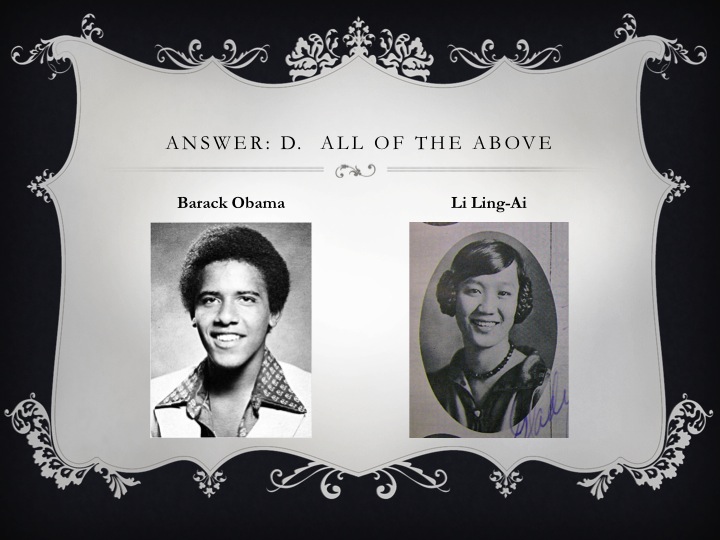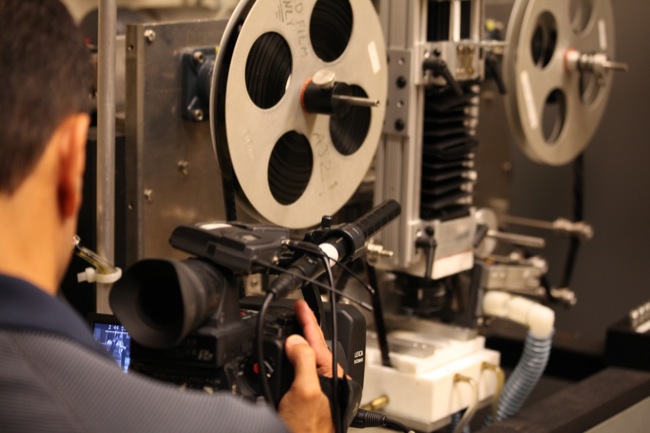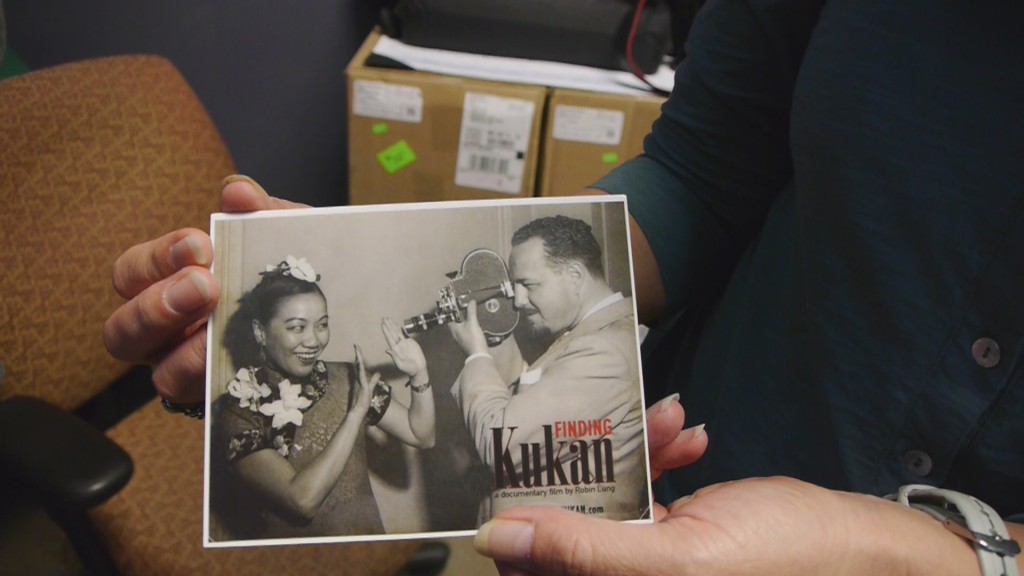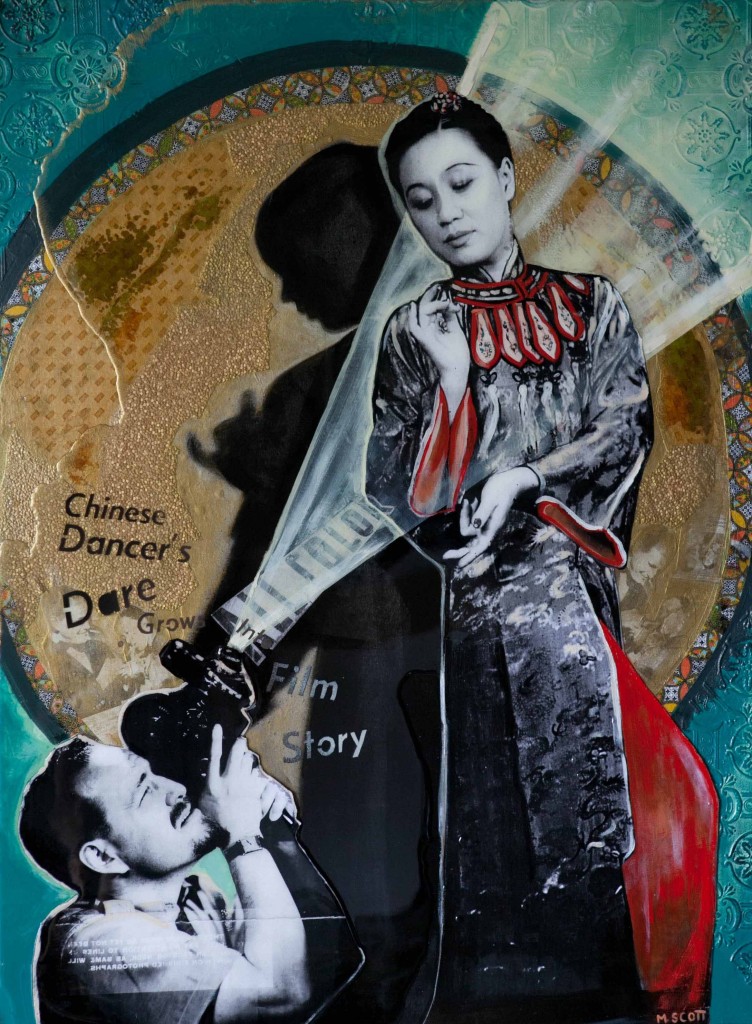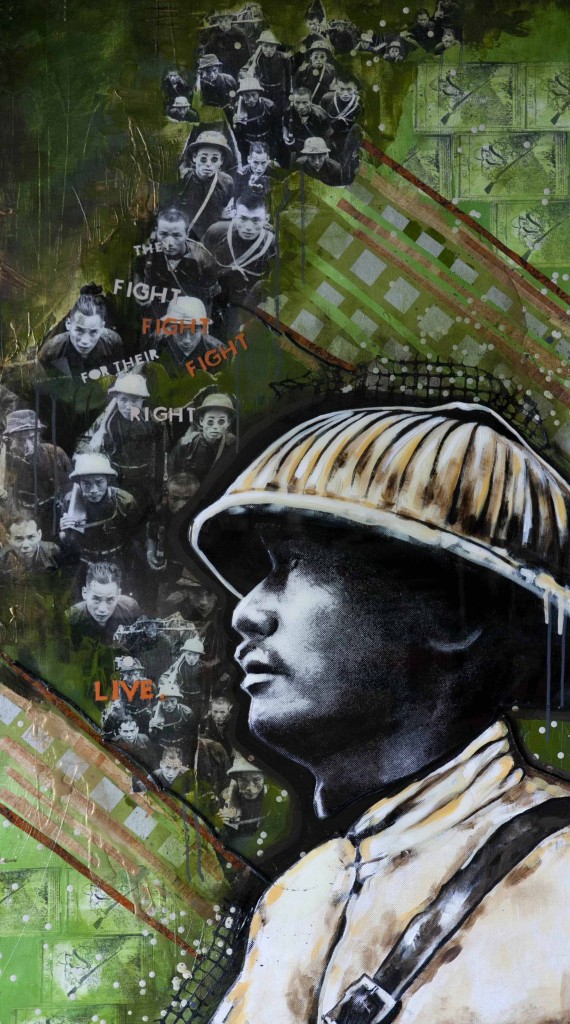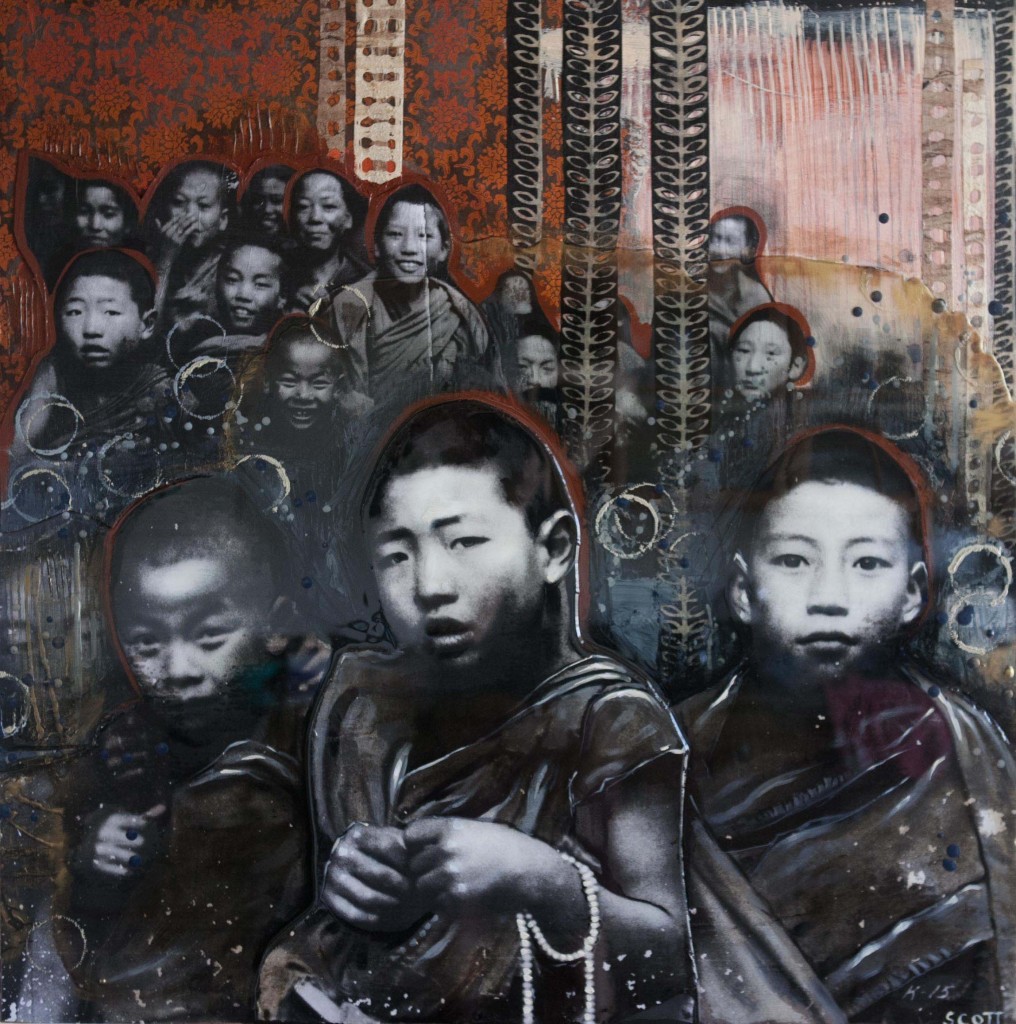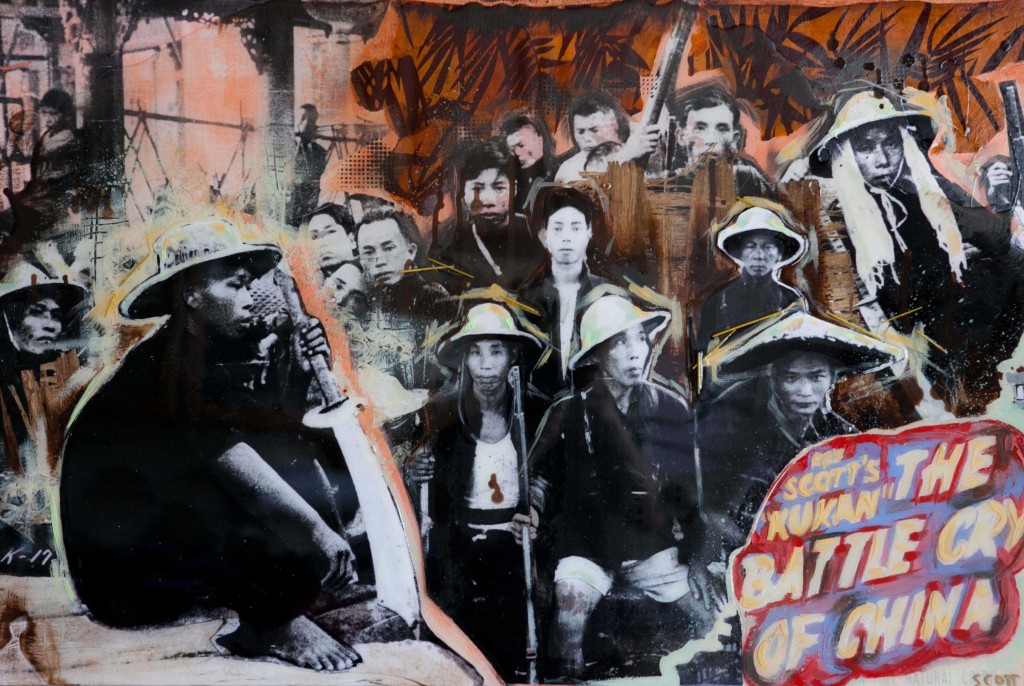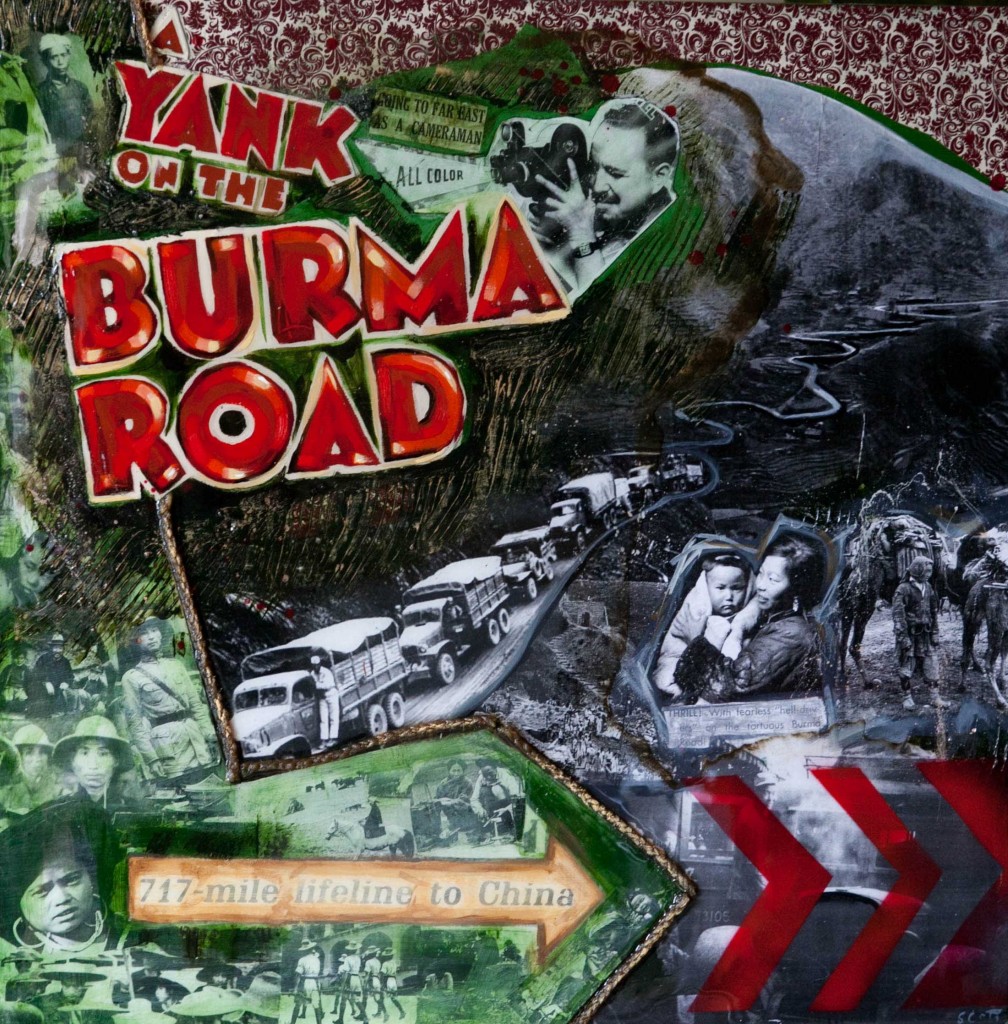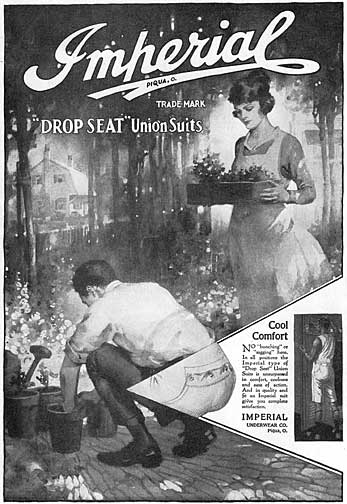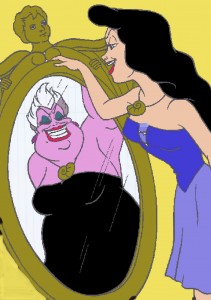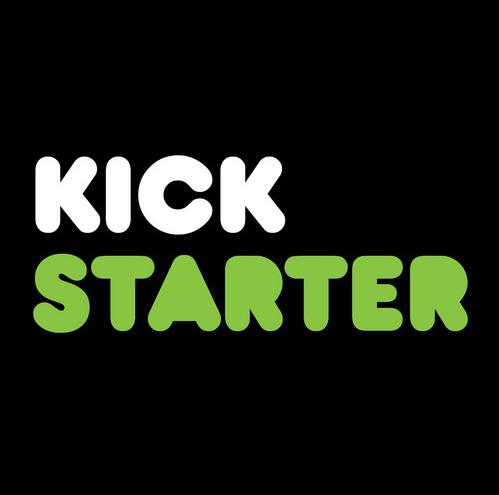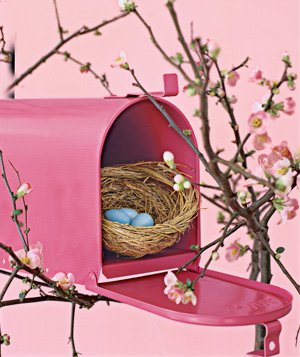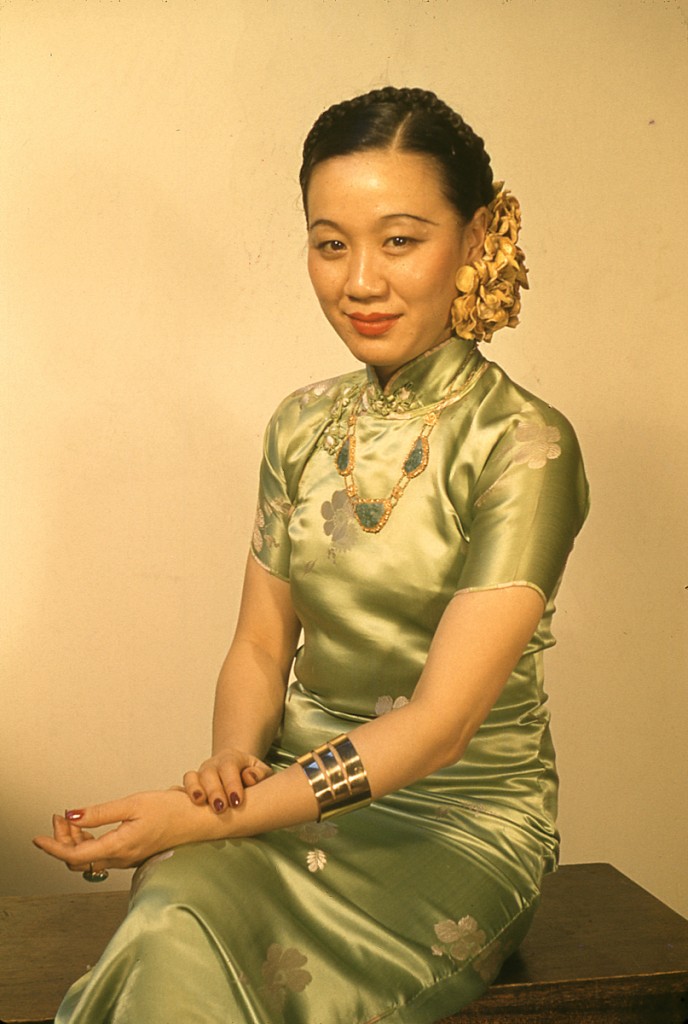Upcoming Screenings:
no event
Follow us on Facebook
HELP BRING FINDING KUKAN TO CLASSROOMS
Sign up for our mailing list.
Category Archives: Finding KUKAN
October 8, 2012 — KUKAN Moves from the ER to the Operating Table
Many of you know by now that my documentary FINDING KUKAN revolves around my discovery of the “lost” 1941 Oscar-winning color film of war-torn China called KUKAN. Many of you might also be wondering, where in the H… is KUKAN? If it was found, then why can’t we see it? Well when I tracked down the only full copy of the film it had been sitting in a Fort Lauderdale studio for a few decades and then a Georgia basement for a couple more. Heat and humidity had done its work.
When AMPAS’s Ed Carter and Joe Lindner opened the rusty metal can that contained KUKAN they winced. “Vinegar,” they both said, wrinkling their noses. I learned later that that is a sure sign of deterioration. As Joe examined the 2 reels of film that represented 90-minutes of invaluable color footage of China in 1939 and 1940, he detected both shrinkage and brittleness (more bad signs of deterioration). Joe said he’d seen films worse off…but not many. Things looked pretty grim. If we were in the Emergency Room, this would be time for triage.
Fortunately a deteriorating film takes longer to die than a bleeding human. Two years later, KUKAN has been stabilized but is still in pretty bad shape as you can see by the photos I took of it last week at Colorlab in Maryland where AMPAS sent it to have major restoration work done.
Parts of it are so curled that they will never be able to be re-plasticized (a sort of Botox process for film that hydrates it enough to allow it to lay flat in the scanner without breaking).

The worst part of the 2 KUKAN reels was so curled it looked like the plastic straws you drink out of.
A partial copy of KUKAN that I located in the National Archives (NARA) will be used to fill in those parts that are unsalvageable. The NARA copy was kept in a temperature controlled environment all these years and is in fairly good shape. But even that has to go through a frame by frame scanning process to pull both image and soundtrack from the 16mm strip.
DP Frank Ayala, 2nd Camera Mia Fernandez and I arrived at Colorlab to film the initial frame by frame scanning of the NARA print and learned a lot about the care and effort needed to bring a film back to life.
A.J. Rohner, head “surgeon” on the KUKAN restoration process, assured me that “my patient” could be saved despite its horrific appearance. He gave us a tour of the monster machine that does the scanning – an invention of Colorlab engineer Tommy Aschenbach.

The scanner doing all the work is a fascinating contraption that blinks and whirs and beeps — just like something out of Startrek.
I was entranced by its gorgeous parts, blinking lights and robotic movements — so much more tangibly satisfying to see at work than watching the little gray line creep across your computer screen as your digital footage downloads.
I also learned how the sound from the film will be lifted from the scan, VISUALLY corrected before turning into sound waves and then cleaned and scrubbed to get all the ticks, and hisses out. I was surprised to learn that those little horizontal lines on the edge of the film are what make the sound come alive through the projector – a magical phenomenon when you think about it.

If you look carefully you can see the sound stripes on one edge of the film. The top strip is the badly deteriorated copy of KUKAN I found. Notice the color loss.
From the photo below A.J. identified the camera Rey Scott was using in China as a 16mm Bolex.
Colorlab technician Laura Major just happened to have one in the office that she still shoots with.
Holding that camera in my hands, looking through the tiny viewfinder, and learning that the camera could only shoot 100 ft of film at a time (roughly 2 minutes) gave me a much greater appreciation for Rey Scott’s heroic accomplishment in filming the epic scenes contained in KUKAN, especially the 15-minute sequence at the end of the movie that depicts the massive bombing of Chungking and the fiery destruction of the city.

You can’t believe how tiny everything looks through this viewfinder — no wonder Rey had a hard time focusing in places.
I am more determined than ever to reach our $16,000 Kickstarter goal so that we can keep following the magical resuscitation of KUKAN and track the amazing story behind its creation. Please join me on this journey, it’s going to be an incredible ride!
October 15, 2012 — FINDING KUKAN Makes it on The Oscar’s Most Wanted Site
What a difference four years makes. When I first read a mention of KUKAN in Li Ling-Ai’s memoir LIFE IS FOR A LONG TIME, I looked it up on Wikipedia only to find that no known copy existed. Ed Carter, the Academy Motion Picture Arts and Sciences Curator had been searching for KUKAN at that point for 6 years. Now thanks to my dogged attempts to identify a Chinese American heroine in a vintage detective novel, KUKAN is now on the Found list on Oscar’s Most Wanted website. Want to know more of the story? Back us on Kickstarter now until November 17 to help get the rest of the story told in FINDING KUKAN.

Screen shot of the the FOUND section of Oscar’s Most Wanted website that features KUKAN and FINDING KUKAN.
Have a lost and found treasure story yourself? Please share. We’d love to hear it.
October 3, 2012 — Michelle Scott Delivers a Knock Out with her KUKAN SERIES
When I first made contact with Rey Scott’s granddaughter Michelle Scott and filled her in a little about the story behind KUKAN, she felt a need to transfer that story into paint and shared with me a vision she had for creating a whole room of paintings dedicated to her grandfather and KUKAN. It seemed like a far-fetched dream back then. So I was more than a little excited to go to Atlanta to witness the opening of Michelle’s solo show — THE KUKAN SERIES. Michelle hadn’t shared any images of the new work with me, so I wasn’t prepared for the visual sweep and emotional power of the work. It literally brought me to tears. Here are a few choice pieces from the show. WARNING — these photos do not do the pieces justice. The real pieces have an almost three-dimensional quality that allows the viewer to enter into the scene and experience a little of Rey Scott and Li Ling-Ai’s world back in the late 30’s.

Artist Michelle Scott with “Start of a Journey” the exclusive premium available for a $5,000 Kickstarter pledge (partially tax deductible).
The 36“X36” piece that Michelle created exclusively for our Kickstarter fundraising drive is displayed right in the front window of 2Rules Fine Art in Marietta. Casual strollers walking down the sidewalk can’t help but be pulled in to find out with the imagery is all about. For close up details of this painting go to our Kickstarter home page.
The KUKAN Series contains a few gorgeous tributes to Li Ling-Ai the Chinese American author who was the uncredited co-producer of KUKAN with Rey Scott.
The work below contains images of Li Ling-Ai from three different decades and three different locations (the old Honolulu Academy of Art, Beijing China, and New York City)
There are also fabulous pieces that provide a visual montage of the China witnessed through Rey Scott’s camera. He took both stills and 16mm color movies. Some of his old cameras are on display too with the original stills.
Rey Scott traveled all the way to Tibet and filmed some of the first color footage of prayer rituals there.
Michelle’s take on the original KUKAN lobby cards for the United Artists version of the film.
Rey Scott also filmed the famous Burma Road as it was being built.
A reminder of the British influence in Hong Kong which fell to the Japanese in 1941.
A whole movie could be made just about the baby giant panda bear that Rey Scott brought from Chengtu to the Chicago Zoo. Originally christened “Li Ling-Ai” by the foreing journalists in Chungking, it was later named Mei Lan when it was identified as a boy panda bear.

“Portrait of a Lady” and “For Him” are the first two pieces that Michelle Scott made in the KUKAN Series
There are many more gems in this show. But the emotional highlight for me was being able to see the first two portraits of Rey Scott and Li Ling-Ai that Michelle did. I first saw them on her website before we even knew each other and before she even knew who Ling-Ai was. This was the first time I was able to see them both in person. Since the pieces had been sold to different collectors several years ago, this was also the first time they were reunited in the same room for quite some time — a symbol of hope for me as I continue to seek funding to finish FINDING KUKAN.
If you are in the Atlanta area make an effort to see this historic show — up only until October 26, 2012
September 25, 2012 — 7 Tips for Nervous Public Speakers
I am about to embark on one of my least favorite occupations — Public Speaking. Although I jumped at the chance to get more exposure for my film by presenting FINDING KUKAN at several upcoming events, I am not a natural speaker. In fact making any kind of announcement to a room full of strangers normally makes me break out in hot flashes that are NOT menopausal-related.
So I’ve been collecting public speaking tips from friends and colleagues. I thought I’d share some of the best ones here.
1) Picture the audience wearing just their underwear (I know this is supposed to make you feel less intimidated, but I’m afraid I might just break out laughing and never recover).

Miss Fancypants the retro underwear maker shows that women know how to have more fun, even in their underwear.
2) Practice your speech in front of a mirror (could be dangerous depending on your self-image)
- I need to take lessons from my cats.
3) Act like a Diva, you’ll sound better. (A hint from my wonderful singing instructor Blossom Lam Hoffman)
- The talented cartoonist Dorie Ratzlaff illustrates my Diva problem.
4) Warm up your voice with a Carol Burnett Tarzan call. (Another hint from my singing instructor)
5) Use lots of visuals so the audience doesn’t focus too much on you. (But be careful of visual overload and the LSD effect).
6) Ask for divine intervention and just wing it.
- What I imagine Divine Intervention might look like. (photo by Hei Astrid)
7) Go online and get some practical tips from the pros.
In the next month or two I will probably try out most of these. I’ll report back which ones worked best for me. What do you do when put in front of a crowd?
September 15, 2012 — A Fresh Take on Fundraising
Writing grant applications is a lonely business, and receiving rejection letters from granting foundations is depressing to say the least. Don’t mistake me. Grant monies have been very helpful to this project. And since we need more grants to get this film finished, we will continue to apply for them and be overjoyed if/when we get them. However, sitting back and wiating to hear if some unknown panel of judges will deem your project worthy of X,Y,Z’s support, can leave a filmmaker feeling powerless and dejected. What to do?
Several months ago I decided to take a part of fundraising into my own hands with the help of KICKSTARTER — an online crowdsourcing platform that creative types from first-time inventors to veteran filmmakers like Charlie Kaufman have been using to raise funds for their projects. The idea is that even with small donations, you can raise a decent chunk of money if enough people get behind you. As someone who was raised to be independent and stand on my own, it feels uncomfortable to ask for help, especially monetary help. But as soon as I started telling people about my plans, Voila! a major shift occured in the energy around my film. I soon had offers of help from friends, colleagues and complete strangers who got excited about getting involved in a creative project and helping it come to fruition. Here are some of the amazing volunteers who’ve joined TEAM KUKAN recently.

Anna Guerin, Debbie Buccigrossi, Robin Lung, Pam tong, Maggie Barrett, and Terry Olival at a fundraising summit for FINDING KUKAN
There are many more people not pictured who have offered goods, services and morale support. Suddenly fundraising doesn’t feel like a lonely, depressing business anymore. It’s still not easy. It’s been challenging, time-consuming, and stressful at times. It’s also a little scary. The way Kickstarter works is that if you don’t raise ALL of your goal you get NOTHING. So I expect the Kickstarter campaign (scheduled to run from Sept 29-Nov 17) will run me more than a little ragged before it’s all through. I also expect it will be an exhilirating ride that many new friends will join me on. I hope you’ll be one of them.
Here is a sneak peek at a couple of premiums we are offering to our Kickstarter pledgers.

Collectible Full-color Posters for FINDING KUKAN are just a couple of our amazing Kickstarter premiums.
(Images courtesy of Hollwood Chinese Collection & Michelle Scott Art)
Want to join the effort? Kickstarter is administered through Amazon. If you shop on Amazon, donating is easy. If you’ve never shopped on Amazon, consider setting up an account to make the Kickstarter donation process go smoothly. Hate the idea of doing anything financial on the internet? Don’t worry, we are giving people the old-fashioned option of putting a check in snail mail too!
So what am I learning on my latest fundraising venture? To FACE MY FEAR, EMBRACE NEW FRIENDS, and HAVE FAITH that things will work out. Have experience fundraising on Kickstarter? Please share by commenting.
September 8, 2012 — Fashion Photos Discovered
Late tonight I am putting off writing a presentation for upcoming October events and browsing the wonderful photos of Li Ling-Ai that Softfilm blogger Durian Dave discovered in the LIFE photo archives. These are all of a United China Relief Fashion show in May 1941 and taken by Alfred Eisenstadt (note KUKAN would premiere the following month in NYC — it must have been a heady time for Li Ling-Ai).

Li LIng-Ai models traditional Chinese robe at May 1941 fashion show for United China Relief.
I love seeing this crowd shot of all the NYC socialites wearing their hats. While viewing these photos, a bell rang in my head and I remembered some of my research at the Columbia Rare Book and Manuscript Library. A fashion show had been held at the Hotel Pierre. Sure enough, I compared a current photo of the penthouse ballroom and the archways are the same. I got chills remembering that I had been to a wedding at that same spot back in the 90’s.
I had no idea that Li Ling-Ai participated in the fashion show when I took those notes at Columbia a couple of years ago.

Li Ling-Ai, with actress K.T. Stevens, James Blaine, Lee Ya Ching, and unidentified Chinese woman
Li LIng-Ai is seen here posing with James Blaine, national chairman of United China Relief and the president of Marine Midland Trust. He was just one of the NYC CEOs that Henry Luce recruited to lead the huge fundraising effort to aid China prior to WWII.
These photos bring this 1941 event to life for me in a whole new way. However, LIFE photographs are notoriously expensive to license. So if I’m going to use them in the documentary, I’m going to have to have a fundraiser myself. Speaking of which… Be on the lookout for our Kickstarter launch in October, and if you’re in Honolulu on October 28, come to our “Night in Old Shanghai” cocktail party benefit where we will pay homage to the efforts of these 1941 fashionista fundraisers.
July 24, 2012 — An Earfull At the Ear Inn
As the weeks wear on and I get closer to the deadline for submitting a grant application to the NEA, I have periods of doubt and wonder if it’s even worth it to try for such a prestigious thing. And if I don’t get awarded a grant what will it mean – that the project is unworthy, and I should give up?
Glancing through pictures I took in May I’m reminded that getting grants and making Art are two different things. These black and white snaps were taken on a hot summer night when I joined my husband Paul and our friend Peer at one of NY’s oldest bars – The Ear Inn on Spring Street.
As I ate muscles at the bar and listened to old-time jazz, a woman named Katerina introduced herself. She had an intriguing accent and was very charming.
Several minutes later her friend Roland joined her – an artist, he showed her photos of his latest work on his Iphone.The striking shadows in his imagery prompted me to talk about the ideas for shadow play I had in mind for FINDING KUKAN.
For some great use of shadows, you should see THE THIRD MAN, said Roland. He sounded like he knew what he was talking about. When I got home I looked up Roland’s website – photos of his performance pieces made me think of all the possibilities before me. The doors to creation opened up a crack.
As I watched THE THIRD MAN for the first time the doors were thrown wide open. Every shot was a compositional gem and fired up ideas in my head for ways to visualize my own search.
I’m hanging on to the DVD so I can watch it for the third time – a reward I’m going to give myself after getting that grant app finished. You DO need a lot of money to make movies, but you DON’T need a lot to enjoy the heck out of them.
Thanks to Roland Gebhardt and the Ear Inn for reminding me of why I’m writing grants applications in the first place.
Whether it’s the bar, the gym, or the beach, we all need to leave the desk once in awhile to get a fresh perspective. Where do you go when you need a creative breath of fresh air?
July 11, 2012 — Cheongsam Dreams
Warning: Use of undefined constant uftp_specialarraysearch - assumed 'uftp_specialarraysearch' (this will throw an Error in a future version of PHP) in /home/nested5/public_html/wp-content/plugins/ultimate-photo-widget-by-eth/gears/source-pinterest.php on line 30
Li Ling-Ai, the Chinese American author who lured me into FINDING KUKAN, was known for always wearing a traditional Chinese dress known as a cheongsam (or qipao in Mandarin).
I didn’t always have an appreciation for the style since I associated it with my elderly grandmother who lived with us when I was a teenager in the 70s. Her old-fashioned Chinese ways and insistence on wearing a Chinese dress everywhere was a cause of angst and embarrassment to me at a time when appearing too ethnic or Asian was just not the cool thing to do.
But my attitude has changed over the years along with the fashions. All the rage in the 20’s and 30’s when Chinese women were expressing newfound freedoms, the cheongsam was banned in mainland China during the Mao era and later considered too old-fashioned by Chinese women who were going for more modern Western looks in the 70s and 80s. According to this excellent article by Babette Radclyffe-Thomas, sexy Chinese movies like IN THE MOOD FOR LOVE have recently inspired a nostalgia for the cheongsam.

One of the exquisite cheongsams fashioned for Maggie Cheung by IN THE MOOD FOR LOVE art director William Chang
Madonna, Nicole Kidman and Kelly Preston have all been caught wearing the style to glamorous effect at red carpet events.
To honor Li LIng-Ai and the revival of the cheongsam (and also divert myself from writing grant applications), I’ve been collecting cheongsam photos on my Pinterest board. Here are some of my favorites.
— No content found.
— Check your ID and board name.
Have a favorite cheongsam of your own? Post in the comments or send me a link to your pin and I’ll put it on my board.
July 8, 2012 — Kickstarter Plans Get Under Way
Well to offset my terrible experience of having my cameras and jewelry ripped off, let’s talk about one of the lucky things that have happened lately. The new FINDING KUKAN teaser has inspired several amazing women to volunteer their talents to help develop the film! All amazing creative professionals in their own right, Pamela Tong, Magnolia Barrett, and Debra Zeleznik recently gathered at my house to talk about how to get the film to the next step. We were guided by the great research volunteer Notre Dame student Camille Muth did for us.

Robin Lung, Pamela Tong, Magnolia Barrett and Debra Zeleznik hold brainstorming session for FINDING KUKAN.
Right now our most immediate need is to raise funding to complete the film. So we are planning a KICKSTARTER CAMPAIGN to begin in OCTOBER. Why Kickstarter you might ask?
#1. IT WORKS. Crowdfunding– it’s what PBS and NPR have been doing for years — the phone in fund drive format where you get a nice little gift and mention on the show for making your donation at a particular time. Kickstarter (administered by Amazon) is just an online way of doing it and is structured so that independent creative types can have a ready made platform to launch their own crowdfunding campaigns. Check out a couple of amazing documentary campaigns here and here.
#2. GRANTS ARE GONE. Well not totally. I’ve been lucky enough to get a couple of small grants in the past and will continue to write onerous grant applications to try to capture what little funding is still available to documentaries — my Executive Producer Kimberlee Bassford pointed out that it’s easier to get into Yale University than it is to get most major film grants. Even directors with several major PBS documentary series under their belts are finding it hard to make films with the traditional funding available in this tight economy.
#3. IT’S FUN. To learn more about Kickstarter I’ve donated to a couple of projects myself. Donating makes you part of a team and gets you emotionally invested in someone else’s creative project. It’s energizing and inspiring to be part of a group effort to create something of lasting value. Plus there are some fun premiums you can get for donating.

Debra suggests a custom-made bracelet made of mah jong tiles as a possible premium — I LOVE IT!
Do you have any experience with Kickstarter or other fundraising efforts? Can you give us some pointers on how to run a successful fundraising campaign? Do you have an idea for a great premium to give to future donors? Don’t be shy! We need all the help we can get. Please let us hear from you!



